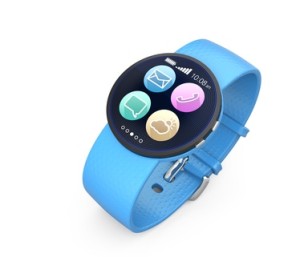 If anyone still had any doubts about the potential of the wearable market, the introduction of the Apple Watch should serve to remove them. By some estimates, the wearable market is currently growing at ten times the rate of the mobile market. And this should come as no surprise–people have been longing for advanced wearable tech for a long time.
If anyone still had any doubts about the potential of the wearable market, the introduction of the Apple Watch should serve to remove them. By some estimates, the wearable market is currently growing at ten times the rate of the mobile market. And this should come as no surprise–people have been longing for advanced wearable tech for a long time.
In the 1930s, people dreamed of having Dick Tracy’s radio watch. In the 1960s, Maxwell Smart’s shoe phone had a certain endearing charm. By the 1990s, people were in love with the comm badges from Star Trek: The Next Generation. Well, it’s now the 2010s, and wearable tech has gone from fiction to fact. And CRM vendors are taking notice.
Understanding what wearable tech is, where it came from, and where it’s going, can help businesses capitalize on this exploding market.
The Origins of Wearable Tech
Wearable tech is nothing new. Frankly, it’s as old as eyeglasses and pocket watches. Though, what we’re discussing here is much newer than those items. Advanced wearable tech, involving processing capabilities, has been in some form of development since the early 1960s. These rudimentary first efforts have given way to far more advanced products.
Some Examples of Wearables
Many wearable devices have come and gone, while others have stuck with us. Calculator watches enjoyed a meteoric rise, and fall, in the mid 1970s. The Sony Walkman enjoyed its heyday in the 80s, then faded along with cassettes. While these wearables were faddish, and victims of advancing technology, other wearables have only benefitted from progress.
Digital hearing aids landed with a thud in the mid 80s–they were too big and had poor battery life. After 30 years of development, they’re now nearly invisible, and last for days on a single charge. Wearable activity trackers are incredibly popular, and allow users to monitor everything from sleep patterns to fitness routines.
Wearables and CRM
CRM is all about collecting data from customer interactions. The more avenues for interaction available, the more data you can collect. While mobile devices (like phones) remove many of the hurdles to customer interactions, they’re still separate products carried in a purse or pocket. Wearables are, obviously, worn — giving them a more consistent presence during day-to-day activities.
These devices directly connect wearers to the providers they’re interested in. Breaking down the last practical barrier between businesses and customers adds immediacy, and improved accuracy, to CRM efforts. The collection of real-time information from customers makes relationship management a little less art and a lot more science.
Current Wearables
Healthcare is one segment that is fully embracing wearable technology. Wearable devices are used in-office to streamline patient information collection. At one time, data such as blood pressure and body temperature were collected, written down, and then transcribed into a digital record. With advancements in wearable tech, the process is now much simpler.
Wireless enabled devices are used by healthcare providers to collect patient vitals. These devices automatically upload the data to the patients’ records, reducing the time it takes to update the records and eliminating the chances of transcription errors. Upon return visits, all of that data is immediately visible in their overall patient record.
One of the most promising examples of wearable CRM technology in healthcare is the recently announced partnership between Salesforce and Royal Phillips NV. This partnership has the stated purpose of using wearable tech and CRM resources to provide better outcomes for patients and providers.
The Next Generation
Until now, most wearables have been pretty purpose-specific. That’s all changed with the introduction of devices like Google Glass and the Apple Watch. These devices are multi-function, web-enabled, and customizable to the user’s needs. As their popularity increases, and their prices decrease, we’ll see even more functionality added.
The Future for CRM Vendors
Some CRM vendors have fully committed to wearables, while others are still testing the waters. Industry-specific CRM for wearables has shown great promise in fields like healthcare and hospitality. How wearable CRM fares in a broader consumer market will depend heavily on the utility customers find in the wearables, and the data businesses can collect.
Given that companies like Apple and Google are leading the charge on the product end makes this technology is even more likely to succeed. These are businesses that are known crowd-pleasers. And, with major CRM vendors getting into the wearable game, it seems likely that companies will enjoy the same success in leveraging data from these devices.
In a nutshell, it looks like CRM and wearables can look forward to a long, successful relationship.



